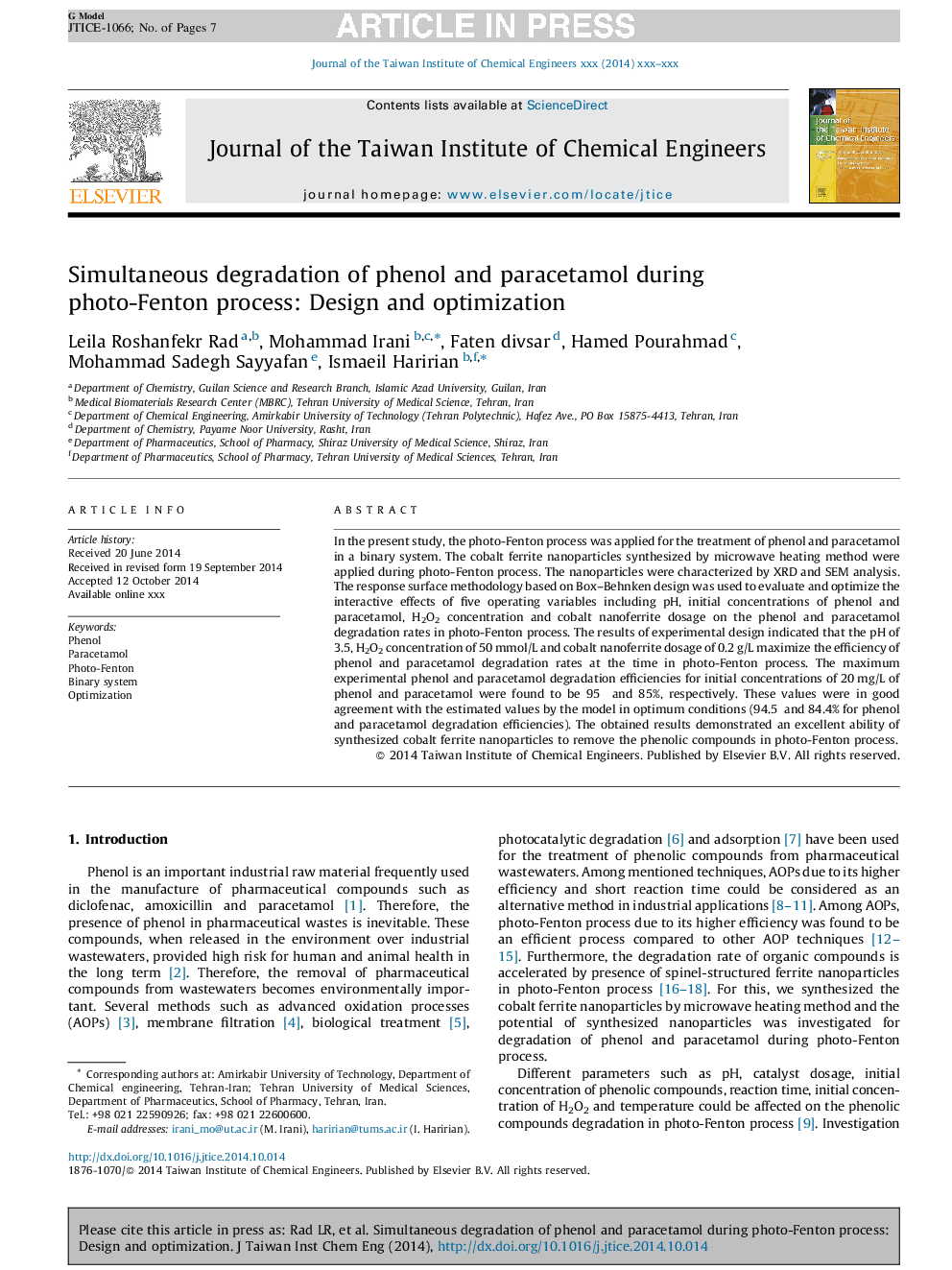| Article ID | Journal | Published Year | Pages | File Type |
|---|---|---|---|---|
| 690981 | Journal of the Taiwan Institute of Chemical Engineers | 2015 | 7 Pages |
Abstract
In the present study, the photo-Fenton process was applied for the treatment of phenol and paracetamol in a binary system. The cobalt ferrite nanoparticles synthesized by microwave heating method were applied during photo-Fenton process. The nanoparticles were characterized by XRD and SEM analysis. The response surface methodology based on Box-Behnken design was used to evaluate and optimize the interactive effects of five operating variables including pH, initial concentrations of phenol and paracetamol, H2O2 concentration and cobalt nanoferrite dosage on the phenol and paracetamol degradation rates in photo-Fenton process. The results of experimental design indicated that the pH of 3.5, H2O2 concentration of 50Â mmol/L and cobalt nanoferrite dosage of 0.2Â g/L maximize the efficiency of phenol and paracetamol degradation rates at the time in photo-Fenton process. The maximum experimental phenol and paracetamol degradation efficiencies for initial concentrations of 20Â mg/L of phenol and paracetamol were found to be 95 and 85%, respectively. These values were in good agreement with the estimated values by the model in optimum conditions (94.5 and 84.4% for phenol and paracetamol degradation efficiencies). The obtained results demonstrated an excellent ability of synthesized cobalt ferrite nanoparticles to remove the phenolic compounds in photo-Fenton process.
Related Topics
Physical Sciences and Engineering
Chemical Engineering
Process Chemistry and Technology
Authors
Leila Roshanfekr Rad, Mohammad Irani, Faten divsar, Hamed Pourahmad, Mohammad Sadegh Sayyafan, Ismaeil Haririan,
